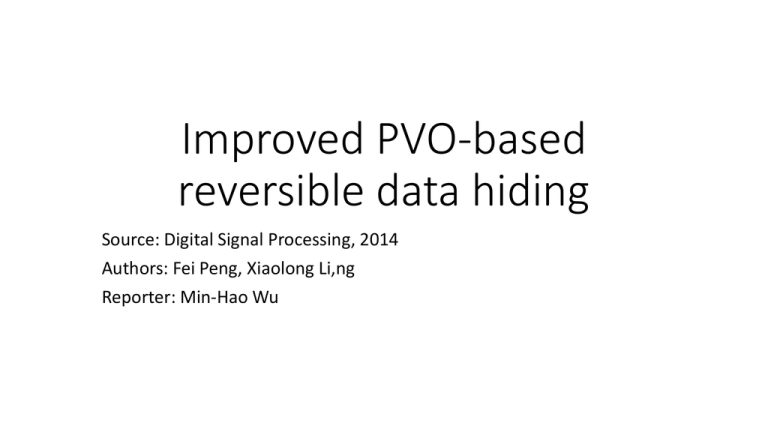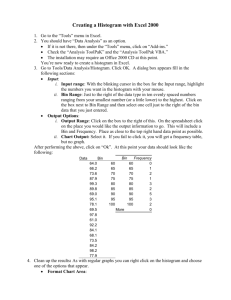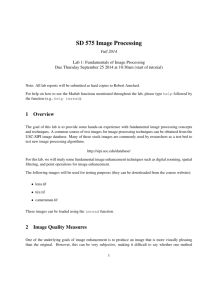High-fidelity reversible data hiding scheme based on pixel
advertisement

Improved PVO-based
reversible data hiding
Source: Digital Signal Processing, 2014
Authors: Fei Peng, Xiaolong Li,ng
Reporter: Min-Hao Wu
Outline
• Related Work
• Proposed Scheme
• Experimental Results
• Conclusions
Related work
• High-fidelity reversible data hiding scheme based on pixel-valueordering and prediction-error expansion
• Signal Processing
• Xiaolong Li, Jian Li, Bin Li, Bin Yang
Data embedding procedure
• Step1: Divide the host image into k non-overlapped blocks {X1, ... ,Xk}
• Step2: The overflow/underflow location map LM is defined in this
step. (Location map construction)
• embed the data bits into the host image
• if LM(i)= 1, the overflow/underflow would occur and we do nothing
• if LM(i)= 0, and Xn-1 – X2 >= T, we do nothing
• if LM(i)= 0, and Xn-1 – X2 < T, will be shifted or expanded to carry data
𝐼0,0
𝐼0,1
𝐼0,2
𝐼0,3
𝐼1,0
𝐼1,1
𝐼1,2
𝐼1,3
𝐼0,0
𝐼0,1
𝐼1,0
𝐼1,1
𝑆0,0
𝑆0,1
𝑆1,0
𝑆1,1
D0,0 = S1,0 – S1,1
• Take 2 × 2 sized blocks as an example
• the histogram of PEmax for the Lena image that capacity about
15,000 bits by PVO-based predictor method
• the bin with PEmax = 1 is usually the histogram peak
Experimental results
• the performance on PSNR is better for a larger block size.
• larger sized blocks provide lower maximum EC.
Experimental results
Experimental results
Conclusion
• based on ordering the pixel values in image block, an effective
predictor is proposed for PEE.
• the flat blocks are priory selected to embed data, which is helpful to
improve the embedding performance.
• This method can achieve a higher PSNR under the same EC.











